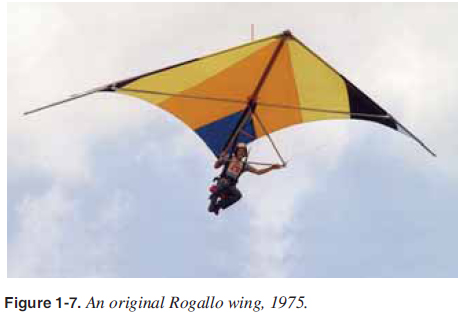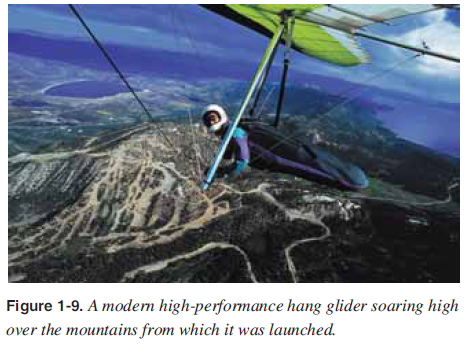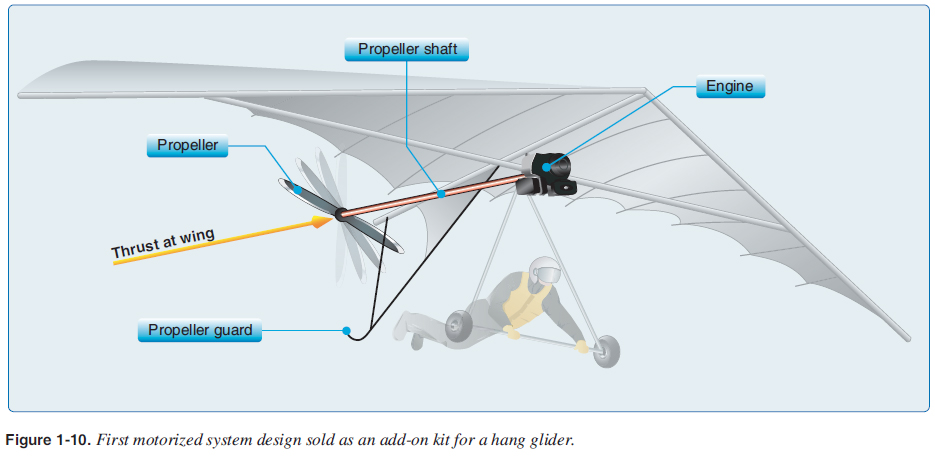
 |
|
||
CHAPTER 1. Introduction To Weight-Shift Control Hang Glider The WSC system and the good fl ying qualities of the Rogallo wing and Dickenson wing, combined with its easy set-up and portability, started the hang gliding craze in the early 1970s. [Figure 1-7] In 1967, the fi rst powered aircraft based on the fl exible wing concept of Dr. Rogallo was registered as amateur-built experimental. Flexible wing development continued, and by the early 1970s several adventurous entrepreneurs were manufacturing Rogallo wings for sport use.  Another signifi cant step in wing design was an airfoil that would change shape for optimum performance at slow and fast speeds. It was the fi rst Rogallo wing with a lower surface that could enclose the structure that holds the wings out. Enclosing this cross bar tube and providing a thicker airfoil similar to the airplane wing provided a jump in high speed performance. This double-surface wing was quickly adopted by manufacturers as the high performance standard and is used on faster WSC aircraft today. [Figure 1-8]  Activity in the hang gliding community increased throughout the 1970s, which resulted in the proliferation and development of stable, high-quality modern hang gliders like the one shown in Figure 1-9.  Motorized Hang Gliders In the late 1970s, performance had increased enough to allow motors to be added to hang gliders and fl own practically. It was not until the wings had become effi cient and the engines and propeller systems evolved that the fi rst commercial motor for a hang glider was introduced in 1977, the Soarmaster. It used a two-stroke engine with a reduction system, clutch, and long drive-shaft that bolted to the wing frame. It had a climb rate as high as 200 feet per minute (fpm) which was acceptable for practical fl ight. However, during takeoff the wing would overtake the running pilot, and launching was very diffi cult. Also while fl ying, if the pilot went weightless or stalled under power, the glider would shoot forward and nose down into a dive. Overall, with the propeller pushing the wing forward during takeoffs and in some situations while fl ying, this was unsafe for a wide application. [Figure 1-10]  A Maturing Industry Engines and airframe technology had made great advances because the ultralight fi xed wing evolution was providing lighter weight, higher power, and more reliable propulsion systems. The propeller was moved lower for better takeoff and fl ight characteristics, wheels were added, and the trike was born at the end of the 1970s. A trike describes a Rogallo type wing with a three wheeled carriage underneath (much like a tricycle arrangement with one wheel in front and two in back). Trike is the industry term to describe both ultralight vehicles and Light-Sport Aircraft (LSA) WSC aircraft. [Figure 1-11] The major trike manufacturers were formed in the early 1980s and continue to deliver trikes worldwide today.  |
| ŠAvStop Online Magazine Contact Us Return To Books |